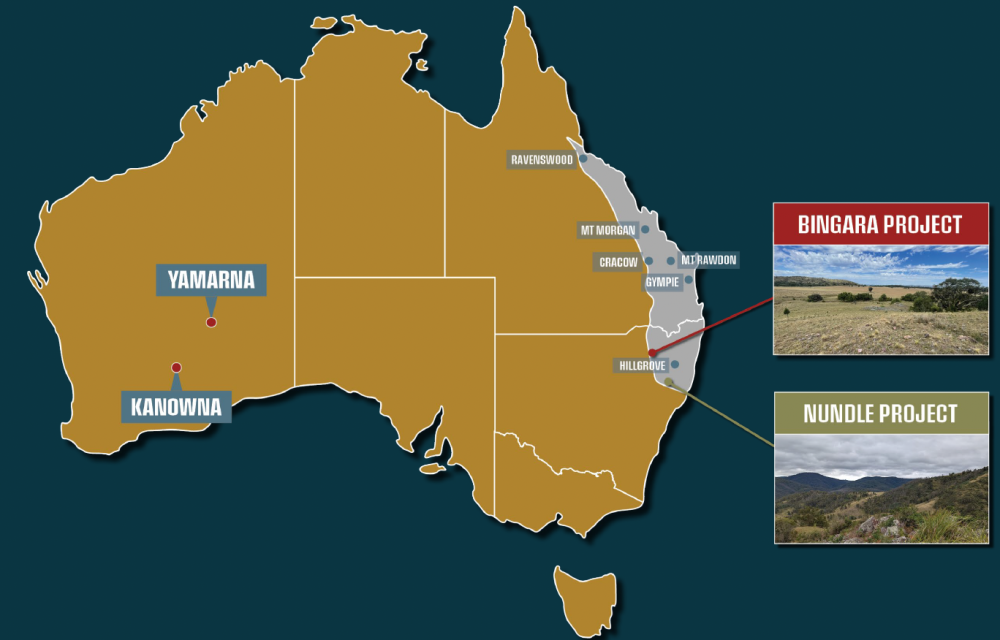Cosmo eyes golden revival as Spring Creek and Mount Everest light up forgotten NSW belt with high-grade hits and untapped copper charm


, , , , , , , , ,
, ,
, , , ,
Cosmo Metals is bringing a modern exploration playbook to one of Australia’s oldest mining districts—and it’s one that could deliver big, belt-scale returns across a suite of walk-up, drill-ready gold, copper, and antimony targets.
Presenting at the RIU Sydney Resources Round-up in May, Cosmo’s recently appointed managing director Ian Prentice detailed the company’s early-stage work across the 743 square kilometre Bingara and Nundle project areas in New South Wales’ New England Orogen—an underexplored mineral province with a long mining history and a conspicuous absence of modern drilling.
“We’re in an area that’s produced over 35 million ounces of gold and hundreds of thousands of tonnes of copper,” said Prentice. “But much of it hasn’t been touched by meaningful exploration in over 30 years. That’s a huge opportunity.”
Rewinding the Drill Clock at Bingara
The focus right now is Bingara—a 484 square kilometre package hosting parallel orogenic gold-antimony and VMS copper trends. At the Spring Creek prospect, Cosmo is planning its first drill campaign mid-year, aiming to confirm and extend a flat-lying, shallow gold system originally intersected in the 1980s.
“We’re seeing hits like 6 metres at 6.43 grams per tonne from just 8 metres downhole, including 2 metres at 17.6 grams,” Prentice told attendees. “This thing’s near surface, very continuous, and it looks every bit like an open-pittable system if we can grow it out”.
Across a broader 4.5-kilometre trend marked by old workings and surface mineralisation, Spring Creek represents only the first target in a campaign designed to ground-truth historical data and identify new high-grade zones.
Parallel Copper Play: Mount Everest
Just to the east, Cosmo is targeting a 20-kilometre VMS corridor with six known copper-gold prospects—most notably the historically mined Mount Everest area, where a copper smelter once operated prior to World War I.
Recent sampling at Mount Everest returned grades of 18.6 percent copper from the supergene zone and 9.8 percent copper from magnetite-pyrite-chalcopyrite banding. A Sub-Audio Magnetotelluric (SAM) survey has mapped magnetic anomalies interpreted as potential concealed sulphide systems.
“We’ve barely scratched the surface here,” said Prentice. “There’s a lot of potential sitting just below weathered cover that’s never had modern geophysics applied until now.”
Nundle: High-Grade Gold and Porphyry-Style Copper
At the Nundle project—also within the New England Orogen—Cosmo is chasing both alluvial gold source zones and deeper, intrusion-related copper-gold systems. One standout is the Barnard Hut–Back Barb corridor, which Prentice says shares geological similarities with Queensland’s Mount Morgan deposit (8Moz gold, 360kt copper).
“We’ve walked the old trenches. You can see the copper mineralisation—malachite, bornite, chalcopyrite—right at surface,” he said. “This is a three-kilometre-long system that hasn’t been seriously looked at since the 1970s. That’s wild”.
At the nearby Folly Line, Cosmo is planning follow-up mapping and surface sampling to refine drill targets after historical drilling returned 5 metres at 5.86g/t gold, including a metre at 17.3g/t. A recent logging operation has exposed ground unseen in decades—an unexpected bonus for field teams already on the ground.
Infrastructure, Funding and First Mover Advantage
With a recently completed $1.57 million entitlement issue, $1.23 million in cash, and a modest $5.48 million market cap, Cosmo enters its exploration phase with a tight capital structure and strong leverage to success. Major shareholder Great Boulder Resources holds 14 percent of the register, and the top 20 investors own approximately 68 percent overall.
Cosmo has already completed LiDAR surveys over both project areas and commenced SAM surveys and surface sampling programs. Drill approvals are underway at Spring Creek, with rigs expected to mobilise later this year.
Wrangling the Underexplored
For METS professionals, the story here is one of scale, shallow mineralisation, and high-grade potential in a largely unpegged geological corridor—coupled with the sort of overlooked infrastructure advantage rarely seen in greenfield plays.
“These are not remote sites. We’re on pastoral land with road access, in a Tier 1 jurisdiction, and we’ve got gold sticking out of the ground,” Prentice said. “We’re not reworking old hits—we’re reactivating a whole mineral belt with modern tools and eyes.”
